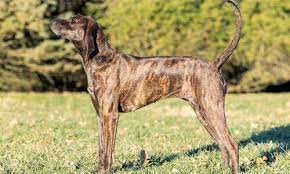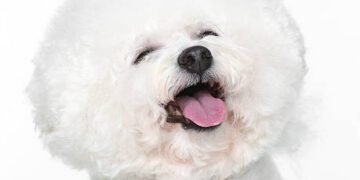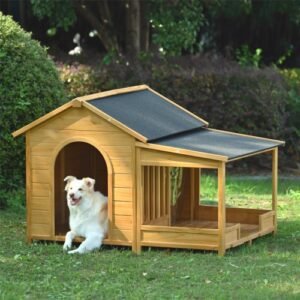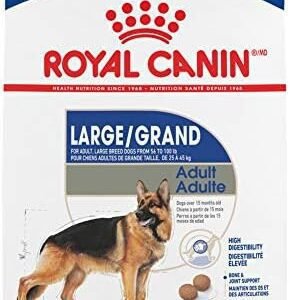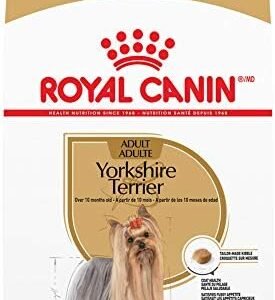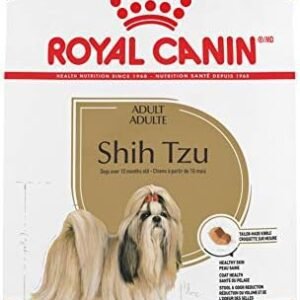The Border Terrier, a small but spirited breed, has captured the hearts of dog enthusiasts worldwide. This section serves as an introduction to the charming and energetic Border Terrier, offering valuable insights into what makes this breed unique and the importance of choosing the right breed to match your lifestyle.
What Sets the Border Terrier Apart
Border Terriers are renowned for their endearing characteristics that set them apart from other dog breeds. Their unwavering loyalty and feisty demeanor make them remarkable companions. Despite their small size, they exhibit a big personality, and beneath their rugged exterior lies a heart full of devotion.
Table of Contents
Significance of Breed Selection
Selecting the right dog breed is a crucial decision that can significantly impact your life and the life of your furry friend. It’s essential to match your lifestyle, environment, and preferences with the characteristics of the breed to ensure a harmonious and fulfilling partnership.

| Field | Information about Border Terrier |
|---|---|
| Height | Not known |
| Weight | Not known |
| Life Span | Not known |
| Good with | Families, Experienced Owners, Children (with proper socialization) |
| Temperament | Feisty, Loyal, Alert, Energetic |
| Intelligence | High |
| Shedding Amount | Low |
| Grooming | Moderate |
| Exercise Needs | High |
| Energy Level | High |
| Barking Level | Moderate |
| Drool Amount | Low |
| Coat Length/Texture | Dense, Harsh, Double Coat |
| Colors | Red, Grizzle & Tan, Blue & Tan, Wheaten |
| Patterns | None |
Breed History and Origin
Exploring Their Roots
The history and origin of the Border Terrier breed take us on a fascinating journey into the past. To truly understand the essence of the Border Terrier, we must explore the breeds that played pivotal roles in their development.
The Legacy of Working Terriers
The Border Terrier’s history is closely tied to the rugged borderlands of England and Scotland. These terriers were bred for specific tasks such as fox hunting and vermin control. Several key breeds contributed to the formation of the Border Terrier:
Distinguished Dachshunds: Dachshunds, with their elongated bodies and tenacious hunting spirit, were likely among the breeds used in the development of Border Terriers. This influence can still be seen in the Border Terrier’s love for hunting and digging.
Fearless Fox Terriers: Fox Terriers were also instrumental in shaping the Border Terrier breed. These agile and brave terriers were ideal for pursuing foxes and other small game, and their courage continues in Border Terriers today.
Rugged Bedlington Terriers: Bedlington Terriers, known for their distinctive curly coat, played a part in the Border Terrier’s genetic makeup. The Border Terrier’s harsh, dense coat might owe some of its traits to this breed.
Notable Traits
The Border Terrier’s history is characterized by traits that continue to distinguish them today:
Hunting Instinct: Rooted in their origins, Border Terriers possess an inherent hunting instinct that makes them excellent working dogs. Their alertness and determination make them a force to be reckoned with in the field.
Small but Mighty: Despite their modest size, Border Terriers are known for their incredible energy and fearlessness. They are tenacious workers, a trait inherited from their ancestors.
Adaptability: The rugged terrain along the border between England and Scotland demanded versatile and adaptable terriers. This history of adaptation makes Border Terriers well-suited to various living conditions and environments.
Relevance of Origin
The Border Terrier’s origin as a working terrier continues to shape their characteristics and temperament. While they may no longer be used for fox hunting or vermin control, their hunting spirit and determination remain strong. Border Terriers are known for their alert, energetic, and inquisitive nature, making them exceptional companions and small-game hunters.
Understanding the Border Terrier Breed’s Traits
Physical Characteristics
When considering the Border Terrier as your future companion, it’s essential to know what to expect in terms of their physical attributes. These characteristics not only define their appearance but also provide insights into their care and maintenance.
Size: Border Terriers are small dogs with a sturdy build. On average, they stand about 10 to 11 inches (25 to 28 cm) tall at the shoulder. Their compact size makes them suitable for various living environments.
Coat Type: The Border Terrier’s coat is one of their most distinctive features. It is dense, harsh, and consists of a double layer. This double coat serves as protection against the elements, and it might require regular grooming to keep it in good condition.
Color: Border Terriers come in several traditional color variations, which include red, grizzle and tan, blue and tan, and wheaten. These coat colors are part of the breed’s charm and character.
Distinguishing Features: While Border Terriers have a relatively uniform appearance, their expressive eyes and scruffy facial hair often set them apart. Their heads are typically well-proportioned to their bodies, giving them a balanced and appealing look.

Temperament Overview
Understanding the temperament of the Border Terrier is crucial for creating a harmonious living environment. This breed possesses a unique combination of characteristics that make them suitable for families and individuals alike.
Suitability as Family Pets: Border Terriers are known for their affectionate and loyal nature. They often form strong bonds with their families and are considered excellent family pets. Their small size and robust personalities make them well-suited for families with children.
Compatibility with Other Pets: Border Terriers can be compatible with other pets, but early socialization is key. They may have a strong prey drive, so introducing them to other animals, such as cats or smaller dogs, should be done gradually and under supervision.
Safe with Children: Border Terriers are generally safe with children, especially when they are raised with them from an early age. Their playful and energetic nature can make them wonderful playmates for kids.
Environment Needs
Understanding the environmental requirements of the Border Terrier is vital to ensure they settle well into your home.
Living Space: Despite their small size, Border Terriers have a lot of energy and require ample exercise. They can adapt to apartment living if they receive daily walks and playtime. However, a home with a fenced yard is ideal for them to burn off energy.
Temperature: Border Terriers can tolerate a range of temperatures, but they might be more comfortable in temperate or cooler climates due to their dense, insulating coat. In hot weather, it’s important to ensure they have shade and water.
Socialization: Border Terriers benefit from regular socialization. This includes exposure to various people, animals, and environments to ensure they grow up to be well-rounded and confident dogs.
Common Behavioral Traits
Border Terriers exhibit a range of behavioral traits that define their unique character. Understanding these traits is essential for effective training and management.
Positive Traits:
- Loyalty: Border Terriers are fiercely loyal to their families and are known for forming strong bonds with their owners.
- Alertness: They are highly alert dogs, making them excellent watchdogs.
- Energetic: Border Terriers have a surplus of energy, which can be harnessed for activities and play.
- Intelligence: Their high intelligence makes them quick learners and problem solvers.
Challenging Traits:
- Stubbornness: While intelligent, they can also be a bit stubborn, so consistent and patient training is necessary.
- Digging Instinct: Many Border Terriers retain their ancestral digging instinct, which might lead to a well-landscaped backyard if not properly managed.
- Territorial Barking: They can be territorial and may bark at perceived threats, so early training to manage this behavior is important.
Popularity and Recognition
The Border Terrier, a small and spirited breed, may not be as widely known as some of the more popular dog breeds, but it has earned its place in the hearts of those who have had the privilege of knowing and living with this remarkable canine companion. In this section, we’ll delve into the breed’s current popularity, recognition by kennel clubs and breed organizations, and explore any notable varieties or subtypes.
Current Popularity
The popularity of dog breeds can ebb and flow over time, influenced by various factors, including media, trends, and lifestyle changes. As of recent times, the Border Terrier maintains a consistent and devoted following, although it’s not considered one of the most popular breeds.
Trends in Ownership: While Border Terriers may not be topping the popularity charts, they continue to be cherished by owners who value their distinctive qualities. Theirunwavering loyalty, lively personality, and adaptability to various living environments make them an excellent choice for those who appreciate these traits.
Loyal Ownership: Border Terrier enthusiasts often describe themselves as part of a close-knit community of like-minded individuals who share a passion for this breed. This loyalty, both from the breed and its owners, contributes to the Border Terrier’s enduring presence.
Breed Recognition
Recognition by kennel clubs and breed organizations is essential for the preservation and promotion of purebred dogs. The Border Terrier has received acknowledgment from several prominent organizations.
American Kennel Club (AKC): The American Kennel Club officially recognized the Border Terrier in 1930. This recognition allowed the breed to compete in various AKC events and dog shows.
The Kennel Club (UK): In the United Kingdom, the Border Terrier holds recognition from The Kennel Club, which plays a pivotal role in overseeing and promoting pedigree breeds in the country.
Fédération Cynologique Internationale (FCI): The FCI, the international canine organization, also includes the Border Terrier in its registry. This recognition extends the breed’s presence and reputation to a global audience.
Notable Breed Varieties
The Border Terrier, with its origins in the borderlands of England and Scotland, is generally a consistent breed with minimal distinct varieties or subtypes. However, there can be slight differences between American and English Border Terriers, which are worth noting:
American Border Terrier:
- American Border Terriers are generally recognized for their conformation to the American Kennel Club (AKC) breed standard.
- They may have some minor variations in terms of appearance, but these are typically within the acceptable standards set by the AKC.
- American Border Terriers often participate in AKC events, including dog shows.
English Border Terrier:
- English Border Terriers are more commonly associated with the original breed standard established in the United Kingdom.
- They may closely resemble their American counterparts but can exhibit slight variations based on breeding practices and regional preferences.
- English Border Terriers often participate in UK-based dog shows and competitions.
It’s essential to note that, despite these slight differences, both American and English Border Terriers share the same fundamental traits that define the breed: loyalty, feistiness, alertness, and adaptability.
In summary, the Border Terrier maintains a dedicated following despite not being one of the most popular dog breeds. Recognized by major kennel clubs and organizations, it continues to be a beloved breed for those who value its distinctive qualities. While there may be minor variations between American and English Border Terriers, their shared characteristics and charm make them outstanding companions. Whether you’re seeking a loyal family pet or an energetic partner for outdoor adventures, the Border Terrier remains a delightful choice.
Health Considerations and Care
The health and well-being of your Border Terrier are of paramount importance. Understanding common health issues, promoting longevity, and providing proper care are essential aspects of responsible dog ownership. In this section, we’ll explore potential health problems that the Border Terrier may be prone to and offer insights into promoting a longer and healthier life for your beloved companion.
Common Health Issues
While Border Terriers are generally healthy dogs, like all breeds, they can be prone to certain health issues. It’s crucial to be aware of these potential concerns and work closely with your veterinarian to maintain your dog’s health.
Patellar Luxation: This is a condition where the dog’s kneecap dislocates from its normal position. Border Terriers can be prone to this issue, and it may cause lameness or discomfort
Hip Dysplasia: Hip dysplasia is a genetic condition where the hip joint doesn’t develop correctly, leading to pain and lameness. Responsible breeders screen for hip dysplasia to reduce the risk.
Heart Problems: Some Border Terriers can be at risk of certain heart conditions, including mitral valve disease. Regular veterinary check-ups are crucial to detect and manage these issues.
Lens Luxation: Lens luxation occurs when the lens within the eye becomes dislocated. It’s a painful condition that can lead to vision loss.
Allergies: Border Terriers may develop allergies, which can manifest as skin irritations or digestive problems. Identifying and managing the specific allergen is essential.
Obesity: While Border Terriers are energetic dogs, overfeeding or lack of exercise can lead to obesity, which is associated with various health problems. A balanced diet and regular exercise are key to preventing this issue.
Dental Problems: Like many small breeds, Border Terriers can be prone to dental issues. Regular dental care, including brushing and dental treats, can help maintain oral health.
Epilepsy: Some Border Terriers may develop epilepsy, which can lead to seizures. Medication is typically required to manage this condition.
It’s important to note that responsible breeding and regular veterinary check-ups play a significant role in reducing the risk of these health issues. Working with a reputable breeder who screens their breeding dogs for known hereditary problems can help ensure a healthier start in life for your Border Terrier.
Lifespan and Longevity
The average lifespan of a Border Terrier typically ranges from 12 to 15 years, with some living even longer when provided with proper care. To promote a longer and healthier life for your Border Terrier, consider the following tips:
Regular Veterinary Check-Ups: Routine visits to the veterinarian are crucial for early detection of health issues. Your vet can recommend a schedule for vaccinations, preventive medications, and wellness exams.
Balanced Diet: Providing your Border Terrier with a balanced diet appropriate for their age and activity level is essential. Overfeeding can lead to obesity, while underfeeding can result in malnutrition.
Exercise and Mental Stimulation: Border Terriers are energetic dogs and require regular exercise to stay healthy and happy. Engage in activities such as walks, playtime, and even dog sports to keep their body and mind active.
Grooming and Hygiene: Regular grooming and hygiene practices, including brushing their dense coat, cleaning their ears, and maintaining dental health, are vital for overall well-being.
Socialization and Training: Early socialization and consistent, positive reinforcement training help your Border Terrier become a well-rounded and well-behaved companion.
Stress Management: Minimize stressors in your Border Terrier’s environment, as stress can lead to various health problems. Provide a safe and secure space for your dog.
Provide Mental Stimulation: Border Terriers are intelligent dogs, and they thrive on mental challenges. Puzzle toys and interactive games can keep their minds sharp.
Watch Their Weight: Monitor your dog’s weight to prevent obesity. An overweight Border Terrier is at higher risk for various health problems.
Maintain Oral Health: Dental health is often overlooked but crucial. Regularly brush your Border Terrier’s teeth and provide dental chews to keep their teeth clean and healthy.
Address Health Concerns Promptly: If you notice any changes in your Border Terrier’s behavior, appetite, or physical condition, consult your veterinarian promptly. Early intervention is often key to successful treatment.
It’s important to note that a well-cared-for Border Terrier can live a long, healthy, and active life. Responsible breeding practices and attention to their specific needs can contribute significantly to their longevity.

Exercise and Activity Recommendations for Border Terriers
Border Terriers are known for their boundless energy and enthusiastic nature. To ensure their physical and mental well-being, it’s essential to provide them with regular exercise and engaging activities. In this section, we’ll delve into a detailed exercise plan tailored to the specific needs of Border Terriers, including various types of exercise, recommended durations, and frequencies.
Understanding Border Terrier’s Exercise Needs
Border Terriers are a high-energy breed with a strong prey drive. Their history as working terriers has instilled in them a desire to explore, run, and engage in activities. Failing to meet their exercise requirements can lead to boredom and potentially destructive behavior. Here are the primary types of exercise that Border Terriers benefit from:
Walks: Daily walks are essential for Border Terriers. Aim for at least one 30-minute walk every day. These walks provide not only physical exercise but also mental stimulation as they encounter various scents and sights.
Playtime: Engage in interactive play sessions with your Border Terrier. Games like fetch, tug-of-war, and hide-and-seek are great for burning off their energy. These sessions should last around 15-20 minutes, a few times a day.
Agility Training: Border Terriers are intelligent dogs that enjoy agility training. Set up an agility course in your yard or attend agility classes. These exercises challenge their minds and keep them physically fit.
Mental Stimulation: Border Terriers thrive on mental stimulation. Puzzle toys, treat-dispensing toys, and training sessions are excellent ways to keep their minds engaged.
Hiking and Trail Walks: If you enjoy outdoor activities, consider taking your Border Terrier on hikes and trail walks. The change in scenery and the opportunity to explore new environments will excite them.
Socialization: Border Terriers love interacting with other dogs. Regular visits to the dog park can provide both exercise and socialization opportunities. Ensure that they play safely with other dogs.
- Swimming: If you have access to a safe swimming area, Border Terriers are generally good swimmers and can enjoy this exercise. Swimming is an excellent full-body workout for them.
Exercise Plan
Here’s a sample exercise plan for your Border Terrier to help them stay physically and mentally fit:
Morning (30 minutes): Begin the day with a brisk walk in the morning. This walk should allow your Border Terrier to explore and enjoy their surroundings. Use a long leash to give them some freedom while ensuring their safety.
Late Morning (15-20 minutes): After the morning walk, engage in a play session with your dog. Games like fetch or tug-of-war are ideal. Ensure they have plenty of opportunities to run and use their muscles.
Lunchtime (15 minutes): Midday is a good time for a shorter walk or another play session, especially if you’re working from home. It breaks up the day for your dog and provides more exercise.
Afternoon (20-30 minutes): Take your Border Terrier for a more extended walk or engage in an agility training session. This session should challenge them both mentally and physically.
Evening (15-20 minutes): In the evening, have another interactive play session to expend any remaining energy. This is an excellent opportunity to reinforce training commands.
Late Evening (15 minutes): A shorter walk before bedtime can help your Border Terrier wind down and prepare for rest. It’s also a good opportunity for them to relieve themselves before sleep.
Remember that these times and durations are approximate and can be adjusted to your and your dog’s schedule and needs. The key is to ensure that your Border Terrier receives a sufficient amount of exercise and mental stimulation every day.
Breed-Specific Considerations
Border Terriers are a versatile breed, but there are some breed-specific exercise considerations to keep in mind:
Prey Drive: Border Terriers have a strong prey drive. While on walks or in open areas, it’s essential to keep them on a leash or in a securely fenced area to prevent them from chasing small animals.
Mind Stimulation: Along with physical exercise, Border Terriers need mental stimulation. Incorporate training sessions and puzzle toys into their routine to challenge their intellect.
Socialization: Border Terriers enjoy the company of other dogs. Regular visits to the dog park or arranging playdates with other friendly dogs can provide socialization and exercise.
- Weather Considerations: These dogs have a dense, insulating coat. In hot weather, avoid exercising during the hottest parts of the day, and provide plenty of water and shade. In cold weather, ensure they stay warm during outdoor activities.
Signs of a Well-Exercised Border Terrier
A well-exercised Border Terrier is a happy and content dog. Signs that your Border Terrier is receiving sufficient exercise and mental stimulation include:
- Contentment and relaxation at home.
- Reduced restlessness and destructive behavior.
- A healthy weight and muscle tone.
- An eagerness to engage in play and training sessions.
- Social behavior with other dogs and people.
Training and socialization are integral aspects of caring for your Border Terrier. These dogs are intelligent, energetic, and responsive to training. Here are some training and socialization considerations:
Early Training: Start training your Border Terrier from a young age. Basic obedience commands such as sit, stay, and recall are essential for their safety and your peace of mind.
Positive Reinforcement: Use positive reinforcement methods such as treats, praise, and play to motivate your dog during training. Border Terriers respond well to reward-based training.
Socialization: Early and ongoing socialization is crucial. Introduce your Border Terrier to various people, animals, and environments to ensure they grow up to be well-rounded and confident dogs.
Behavioral Challenges: Be prepared for some stubbornness, especially during adolescence. Border Terriers can have a strong-willed nature, so consistency and patience in training are essential.
Exercising Their Minds: Border Terriers are problem solvers. Keep them mentally engaged with puzzle toys, interactive games, and training sessions. This mental stimulation is as important as physical exercise.
Conclusion
The Border Terrier is a remarkable breed with a rich history, unique characteristics, and enduring popularity. Their unwavering loyalty, feisty temperament, and adaptability to various lifestyles make them outstanding companions for families, singles, and dog enthusiasts alike.
Understanding their history as working terriers and the traits they’ve inherited from their ancestors provides valuable insights into their behavior and instincts. Recognized by major kennel clubs and organizations, the Border Terrier’s enduring presence is a testament to their enduring charm.
Caring for a Border Terrier involves various aspects, from nutrition and grooming to exercise and health monitoring. With the right care, they can live a long and healthy life, bringing joy and love to their owners.
Whether you’re looking for a spirited playmate for your children, a loyal friend for your outdoor adventures, or simply a loving presence in your home, the Border Terrier is a breed that excels in all these roles. Their small size conceals a big heart, and their unwavering devotion makes them an exceptional choice for those seeking a four-legged companion that will forever hold a special place in their hearts.
Personal Stories and Testimonials
Real-life stories and testimonials from Border Terrier owners can provide invaluable insights into what it’s like to share your life with this remarkable breed. Here are a few personal stories and testimonials that highlight the unique experiences, challenges, and joys of Border Terrier ownership.
Story 1: Meet Max, the Energetic Explorer
Max’s Owner, Sarah:
“Max is our beloved Border Terrier, and he’s the embodiment of boundless energy. From the moment we brought him home, he filled our lives with laughter and adventure. His curious nature and love for the outdoors have led us on countless hiking trips, where he fearlessly explores new trails and greets fellow hikers with a wagging tail.
Max is not just a dog; he’s a member of our family. His loyalty and affection brighten our every day. However, owning a Border Terrier comes with its challenges. Max’s strong prey drive means we must be vigilant during our walks, as he’s always on the lookout for squirrels and rabbits. It’s been quite the training journey to ensure he’s safe and responsive, but the effort is worth it.
We’ve also discovered the joy of agility training with Max. He thrives on the mental and physical challenges it offers. His enthusiasm for agility courses is infectious, and he’s won the hearts of many at our local training center.
Max is more than a pet; he’s a companion, a friend, and a source of endless entertainment. The love and happiness he brings to our lives are immeasurable.”
Story 2: Bella, the Border Terrier Princess
Bella’s Owner, Michael:
“Bella is the royalty of our household, a Border Terrier with a personality as charming as her appearance. Her expressive eyes and elegant scruffiness melt our hearts daily. She’s not just a dog; she’s our princess.
While Bella is a petite dog, her spirit is colossal. Her loyalty knows no bounds, and she’s been the solace in our lives during challenging times. Bella has an uncanny ability to sense our emotions and provide comfort.
One of the remarkable things about Bella is her adaptability. We live in a city apartment, but she’s as content with urban living as she is with our countryside getaways. She’s the perfect balance of vivacity and cuddliness.
As much as we adore Bella, we can’t ignore her passion for digging. Our backyard is a testament to her archaeological pursuits. We’ve embraced this trait by creating a dedicated digging zone for her, complete with buried treasures.
Bella’s story is one of joy, love, and the special bond between a Border Terrier and her humans. She’s a constant reminder of the beauty that dogs bring into our lives.”
Testimonial 1: A Lifelong Friendship with Buddy
Buddy’s Owner, Lisa:
“I’ve had the pleasure of sharing my life with Buddy, my Border Terrier, for over a decade. From the moment he entered my life, he brought joy and companionship like no other. Buddy’s loyalty is unwavering, and he’s always by my side, ready for any adventure.
Buddy’s inquisitive nature has made our walks more exciting. He loves exploring new trails and meeting fellow dog owners, making our daily outings a social experience. His small size doesn’t stop him from being the heart of our local dog park.
Owning a Border Terrier is an ongoing learning experience. Buddy’s intelligence is evident in his problem-solving abilities, and this often means we need to stay one step ahead of him in training. But the time invested in training and play is returned tenfold in love and affection.
Buddy isn’t just a pet; he’s family. He’s the one who greets me with excitement every morning and makes my evenings complete with his presence. The bond between us is something I cherish every day. Having Buddy in my life has been a gift beyond measure.”
Testimonial 2: Marley, the Fearless Protector
Marley’s Owner, Tom:
“Marley, our Border Terrier, is a testament to the breed’s alertness and courage. Despite his small size, he’s a protector and a loyal friend. Marley’s watchful eyes miss nothing, and he’s quick to alert us to any unusual sounds or visitors.
One of the things that stands out about Marley is his fearlessness. He approaches every challenge with determination. We’ve seen him chase away much larger animals that dared to enter our yard, showing his tenacity and bravery.
Marley is a great addition to our family, and his playfulness is infectious. He keeps our children entertained for hours with his energetic games of fetch and tag. His enthusiasm for life is a reminder to find joy in the little things.
While he has his moments of stubbornness, Marley’s intelligence is evident in his problem-solving skills. Training him has been a rewarding experience, and his love and loyalty are immeasurable. Marley’s presence has made our home safer and our hearts fuller.”
These personal stories and testimonials reflect the diverse experiences of Border Terrier owners. From energetic explorers to charming companions, each Border Terrier brings a unique blend of loyalty, courage, and love into the lives of their humans. Whether you’re seeking a four-legged adventurer or a fearless protector, the Border Terrier may be the ideal breed to enrich your life.
The Cost of Owning a Border Terrier
Owning a Border Terrier comes with various expenses, both upfront and ongoing. It’s essential to understand the financial responsibilities associated with dog ownership and budget accordingly. In this section, we’ll break down the costs of owning a Border Terrier, including initial expenses and recurring costs, to help you prepare for your new furry family member.
Initial Expenses
Adoption or Purchase: The cost of acquiring a Border Terrier can vary widely depending on whether you adopt from a shelter or purchase from a breeder. Adoption fees typically range from $50 to $200, while purebred puppies from reputable breeders can cost anywhere from $1,000 to $2,500 or more.
Spaying/Neutering: If your Border Terrier is not already spayed or neutered, this procedure typically costs between $200 and $500. Spaying and neutering are essential for the health of your dog and to prevent unwanted litters.
Initial Vaccinations: Your puppy will need a series of vaccinations, including distemper, parvovirus, and rabies. The cost can range from $75 to $100 per set of shots.
Microchipping: Microchipping is a crucial step in ensuring your Border Terrier’s safety. The cost for microchipping typically ranges from $25 to $50.
Collar, Leash, and ID Tag: You’ll need a collar, leash, and ID tag for your Border Terrier. These items can cost anywhere from $20 to $50, depending on the quality and style.
Crate and Bed: A crate provides a secure space for your dog and aids in house training. The cost of a crate varies depending on the size and type but can range from $30 to $150. A comfortable bed costs around $20 to $50.
Bowls and Feeding Supplies: Stainless steel or ceramic food and water bowls are essential. Expect to spend around $10 to $30 on these supplies.
Toys: Border Terriers are active and intelligent dogs that benefit from a variety of toys. Budget around $20 to $50 for toys.
Grooming Supplies: Grooming supplies, including brushes, shampoo, and nail clippers, will cost approximately $20 to $50.
Basic Training and Socialization: Enrolling your Border Terrier in puppy training classes or socialization classes is highly recommended. These classes typically cost around $100 to $150.
Initial Health Check: An initial health check by a veterinarian ensures your dog is healthy and can cost around $50 to $100.
Pet Insurance: While not mandatory, pet insurance can help offset future veterinary expenses. The cost of pet insurance varies depending on the coverage, but it typically ranges from $20 to $50 per month.
The total initial expenses for acquiring and setting up your Border Terrier can range from $600 to $4,000 or more, depending on your choices and the specific needs of your dog.
Ongoing Expenses
Food: Quality dog food is an ongoing expense. Depending on the brand and type, you can expect to spend approximately $20 to $60 per month on dog food.
Veterinary Care: Regular veterinary check-ups, vaccinations, and preventive medications can cost around $200 to $400 annually. This cost can vary based on your location and the specific needs of your dog.
Dental Care: Dental care is crucial for Border Terriers. Dental cleaning and maintenance can cost approximately $100 to $300 annually.
Grooming: If you don’t groom your Border Terrier at home, professional grooming sessions can cost around $50 to $70 every 6-8 weeks.
Training and Socialization: Ongoing training, socialization classes, and mental stimulation toys can cost approximately $150 to $200 per year.
Pet Insurance: The monthly cost of pet insurance can range from $20 to $50, depending on the coverage.
Toys and Supplies: Replacing and adding new toys and supplies to keep your Border Terrier mentally and physically engaged can cost around $50 to $100 annually.
Pet Sitting or Boarding: If you need pet sitting or boarding services, the cost can vary significantly, with daily rates ranging from $25 to $75.
Flea and Tick Prevention: Flea and tick prevention medications typically cost around $10 to $20 per month during the peak season.
Additional Health Expenses: In the event of illnesses or accidents, you may need to budget for unexpected health expenses, which can vary widely.
License and Registration: Depending on your location, you may be required to purchase an annual dog license, which can cost around $10 to $20.
The total annual cost of caring for a Border Terrier can range from $800 to $2,500 or more, depending on various factors, including your location and the specific needs of your dog.
It’s essential to budget for both initial expenses and ongoing costs to provide your Border Terrier with the care and attention they deserve. Owning a Border Terrier is a rewarding experience, and understanding the financial commitmentis a crucial aspect of responsible dog ownership.
Grooming and Care for Your Border Terrier
Proper grooming and care are essential for maintaining the health and happiness of your Border Terrier. In this section, we’ll provide guidance on grooming practices, including brushing, bathing, and ear and dental care. We’ll also recommend accessories and care products tailored to the specific needs of Border Terriers.
Brushing and Coat Care
Border Terriers have a unique double coat that consists of a dense, harsh outer coat and a soft, insulating undercoat. Regular brushing helps keep their coat healthy and free of mats. Here’s a step-by-step guide to brushing and coat care:
Select the Right Brush: To effectively remove loose hair and prevent matting, use a slicker brush or a pin brush with soft bristles. A comb with widely spaced teeth is also useful for detangling.
Brushing Frequency: Border Terriers typically benefit from brushing 2-3 times a week. During seasonal shedding, daily brushing may be necessary to remove loose hair.
Start with the Undercoat: Begin by gently brushing the soft undercoat to remove loose and dead hair. Be thorough but gentle to avoid causing discomfort.
Brush the Topcoat: Brush the harsh topcoat to remove any debris and to maintain its texture. Pay extra attention to areas prone to matting, such as behind the ears and under the tail.
Check for Mats and Tangles: Regularly inspect your Border Terrier’s coat for mats or tangles, especially in the beard and leg feathers. Use a comb to carefully work through any problem areas.
Trimming and Hand-Stripping: Some owners choose to hand-strip the topcoat to maintain its texture and color. If you’re not familiar with hand-stripping, consult a professional groomer for guidance.
Bathing and Skin Care
Border Terriers are generally low-shedding dogs, and bathing should be done as needed, typically every 2-3 months or when they become dirty or smelly. Here are steps to follow when bathing your Border Terrier:
Use a Dog-Specific Shampoo: Select a mild, dog-specific shampoo thatwon’t strip their coat of natural oils. Avoid using human shampoos, as they can be too harsh for a dog’s skin.
Preparation: Brush your Border Terrier’s coat before bathing to remove any tangles or mats. Place a cotton ball in each ear to prevent water from entering.
Water Temperature: Use lukewarm water for the bath. Ensure that the water is comfortable, neither too hot nor too cold.
Gentle Washing: Wet your dog thoroughly, starting from the neck down. Gently lather the shampoo and massage it into their coat, avoiding their eyes and ears. Rinse thoroughly to remove all soap residue.
Towel Dry: After the bath, gently towel dry your Border Terrier. Be prepared for a little shake!
Blow Drying: Border Terriers have dense coats, so using a blow dryer on a low, cool setting can help ensure their coat is thoroughly dried. Ensure they are comfortable with the dryer.
- Skin and Ear Care: After the bath, check for any signs of skin issues, including redness or irritation. Clean their ears using a dog-specific ear cleaner to prevent infection.
Ear Care
Border Terriers have folded ears that can trap moisture and debris, making them prone to ear issues. Regular ear care is essential to prevent infections. Here’s how to care for your Border Terrier’s ears:
Regular Inspection: Check your dog’s ears weekly for signs of redness, swelling, odor, or discharge. These can be indicators of ear problems.
Cleaning: Use a dog-specific ear cleaner and a cotton ball to gently clean the visible parts of the ear. Never insert anything deep into the ear canal.
Drying: After bathing or swimming, make sure to dry your Border Terrier’s ears thoroughly. Moisture can lead to ear infections.
- Consult a Veterinarian: If you notice any persistent ear issues or signs of discomfort, consult your veterinarian for a proper diagnosis and treatment.
Dental Care
Dental health is crucial for your Border Terrier’s overall well-being. Dental problems can lead to pain and other health issues. Follow these dental care tips:
Tooth Brushing: Brush your dog’s teeth regularly using a dog-specific toothbrush and toothpaste. Brushing several times a week can help prevent plaque and tartar buildup.
Dental Chews and Toys: Provide dental chews and toys designed to promote oral health. These can help reduce plaque and tartar while keeping your dog entertained.
Professional Dental Cleaning: Schedule regular professional dental cleanings with your veterinarian to address more serious dental issues and maintain good oral health.
Accessories and Care Products
To help you maintain your Border Terrier’s grooming and overall well-being, consider these accessories and care products:
Grooming Tools: Invest in high-quality brushes, combs, and nail clippers designed for dogs. A slicker brush, a pin brush, and a comb with widely spaced teeth are essential for coat care.
Dog-Specific Shampoo: Choose a mild and dog-specific shampoo for bathing your Border Terrier.
Ear Cleaner: Use a dog-specific ear cleaner and cotton balls to keep their ears clean and prevent infections.
Dental Care Products: Purchase dog-specific toothbrushes, toothpaste, dental chews, and toys to maintain your dog’s dental health.
Gentle Blow Dryer: A blow dryer on a low, cool setting is helpful for drying your Border Terrier’s dense coat after a bath
Cotton Balls: Keep a supply of cotton balls for ear care and other grooming needs.
In conclusion, proper grooming and care are essential for keeping your Border Terrier healthy and happy. Regular brushing, bathing, ear and dental care, along with the use of high-quality grooming tools and products, will ensure your dog’s coat and overall well-being are in excellent condition. By following these guidelines and attending to your Border Terrier’s specific grooming needs, you can enjoy a clean, comfortable, and content canine companion.
Choosing and Adopting a Border Terrier
Adopting a Border Terrier is a wonderful decision, but it comes with important responsibilities and considerations. This section will guide you through the process of choosing and adopting a Border Terrier, focusing on the benefits of adoption, research and preparation, the adoption process, and ethical considerations.
Reasons for Adoption
Choosing to adopt a Border Terrier can be incredibly rewarding for several reasons:
1. Giving a Rescue Dog a Second Chance: Adoption gives Border Terriers in need a loving and forever home. You provide them with a new lease on life and the chance to be a part of a caring family.
2. Companionship: Border Terriers are known for their loyalty and affection. By adopting, you gain a devoted and loving companion.
3. Health and Behavior Assessment: Many rescue organizations and shelters provide detailed information about the dog’s health and behavior, which can help you find the right match for your family and lifestyle.
4. Reducing Overpopulation: When you adopt, you’re not supporting the breeding industry. Many dogs in shelters and rescues need homes, and adopting helps reduce the overpopulation problem.
Research and Preparation
Before adopting a Border Terrier, it’s crucial to do your homework and prepare for your new family member. Here are some important steps to consider:
Understanding Border Terrier Breed-Specific Needs: Take the time to research the specific needs, characteristics, and energy levels of Border Terriers. This will help you ensure that they are a good match for your lifestyle.
Financial Responsibilities: Be aware of the financial responsibilities of pet ownership. This includes initial adoption fees, vaccinations, regular vet check-ups, grooming, and food costs.
Training and Socialization: Plan for the training and socialization needs of your Border Terrier. Positive reinforcement training is effective, and early socialization helps them become well-rounded pets.
Safety Precautions: Prepare your home for your new dog. This includes securing fences, removing hazards, and providing a safe and comfortable space for your Border Terrier.
Adoption Process
The adoption process for a Border Terrier may vary slightly depending on the rescue organization or shelter, but it generally includes the following steps:
1. Research Rescues and Shelters: Begin by researching Border Terrier rescue organizations, breed-specific shelters, or local animal shelters. These organizations are dedicated to finding homes for Border Terriers in need.
2. Fill Out an Application: Most rescue organizations require potential adopters to complete an application. This application helps match you with a Border Terrier that suits your lifestyle and preferences.
3. Home Visit: In some cases, rescue organizations may conduct a home visit to ensure that your living environment is safe and suitable for a Border Terrier.
4. Adoption Fee: Expect to pay an adoption fee, which typically covers the cost of vaccinations, spaying or neutering, and other initial veterinary care.
5. Meet the Border Terrier: Once your application is approved, you will have the opportunity to meet the Border Terrier you intend to adopt. Spend time with them to ensure it’s a good fit.
6. Finalize Adoption: After a successful meeting, you can finalize the adoption process, complete any necessary paperwork, and bring your new Border Terrier home.
7. Post-Adoption Support: Many rescue organizations offer post-adoption support, including advice on training and healthcare.
Breeding and Ethical Considerations
While adopting a Border Terrier is a compassionate choice, it’s also essential to consider responsible breeding practices and ethical considerations.
Responsible Breeding Practices: If you decide to go through a breeder rather than adopting, choose a responsible breeder who follows ethical breeding practices. Responsible breeders prioritize the health and well-being of their dogs, conduct health screenings, and focus on genetic diversity.
Health Screening: Ensure that the breeder conducts health screenings for genetic conditions common in Border Terriers. A responsible breeder should provide you with the health records of the puppy’s parents and offer a health guarantee for your new pet.
Genetic Diversity: Ethical breeding aims to maintain genetic diversity within the breed, reducing the risk of inherited health problems.
FAQ’s about Border Terriers
Are Border Terriers hypoallergenic?
While no dog is completely hypoallergenic, Border Terriers are considered a hypoallergenic breed. Their minimal shedding and dense, harsh coat reduce the spread of allergenic dander, making them a better choice for allergy sufferers.
Do Border Terriers get along with other pets like cats?
Border Terriers can get along with cats and other pets, but early socialization is crucial. They have a strong prey drive, so gradual introductions and supervision are necessary.
Are Border Terriers good for apartment living?
Border Terriers can adapt to apartment living if they receive sufficient exercise and mental stimulation. However, a home with a fenced yard is ideal to allow them to burn off their energy.
Do Border Terriers shed a lot?
Border Terriers are a low-shedding breed. Their dense, harsh, double coat sheds minimally. Regular grooming can help manage their coat and reduce shedding even further.
Are Border Terriers easy to train?
Border Terriers are intelligent but can be a bit stubborn. Consistent and patient training is necessary. Positive reinforcement methods and early socialization contribute to successful training.
How often should Border Terriers be groomed?
Border Terriers should be groomed regularly. Brushing their coat a few times a week helps prevent matting. They require occasional hand-stripping to maintain their unique coat texture.
Do Border Terriers require a lot of exercise?
Yes, Border Terriers have high exercise needs due to their energetic nature. Daily walks, playtime, and mental stimulation are essential to keep them healthy and happy.
Are Border Terriers good with children?
Border Terriers are generally good with children when raised with them from an early age. Their playful and energetic nature can make them wonderful playmates for kids.
Conclusion
In conclusion, the Border Terrier is a remarkable breed that combines a feisty spirit with unwavering loyalty. Their unique characteristics, history, and care requirements make them an excellent choice for those who understand and appreciate their specific needs.
In this comprehensive guide to the Border Terrier, we’ve covered a wide range of topics, providing valuable insights into this delightful breed:
Breed Overview
We began with an introduction to the Border Terrier, emphasizing the importance of selecting the right breed for your lifestyle. In a detailed table, we offered a quick reference guide to the Border Terrier’s physical characteristics, temperament, and care requirements.
Breed History and Origin
Exploring the roots of the Border Terrier, we traced their history to the rugged borderlands of England and Scotland. We highlighted the legacy of working terriers and their adaptation to the challenging environment. This historical context sheds light on the breed’s distinctive traits and temperament.
Understanding the Border Terrier Breed’s Traits
We dived into the physical characteristics of Border Terriers, offering insights into their size, coat type, color variations, and other distinguishing features. A comprehensive understanding of their temperament and environmental needs ensures a harmonious partnership with this breed.
Popularity and Recognition
While not the most popular breed, the Border Terrier has a dedicated following. We explored their current popularity, recognition by kennel clubs and organizations, and minor variations between American and English Border Terriers. Despite these differences, their shared characteristics and charm make them outstanding companions.
Health Considerations and Care
The health and care of your Border Terrier are paramount. We discussed common health issues that they may be prone to, emphasizing the role of responsible breeding and regular veterinary check-ups. To promote a longer and healthier life, we provided essential care tips.
Exercise and Activity Recommendations for Border Terriers
Border Terriers are energetic dogs that require regular exercise and mental stimulation. We offered a detailed exercise plan tailored to their specific needs, ensuring they remain physically and mentally fit. By understanding their prey drive and breed-specific considerations, you can provide a fulfilling exercise routine for your Border Terrier.
Responsible Ownership
We underscored the significance of responsible pet ownership, including proper care, training, socialization, and stress management. By meeting their specific needs and being attentive to their health, you can ensure a happy and healthy life for your Border Terrier.
Encourage Adoption
Lastly, we encouraged readers to explore adoption options for the Border Terrier. Adoption is a noble choice that can provide loving homes for dogs in need. By adopting a Border Terrier, you not only gain a wonderful companion but also contribute to the well-being of these spirited dogs.
In the world of dog breeds, the Border Terrier stands out as a small but spirited companion. Their loyalty, energy, and adaptability make them an excellent choice for families, individuals, and dog enthusiasts alike. With the knowledge and insights gained from this guide, you are well-prepared to embark on a rewarding journey with this exceptional breed. Whether you seek an energetic playmate for your children, a loyal family member, or a dedicated partner for outdoor adventures, the Border Terrier is ready to become an integral part of your life.



